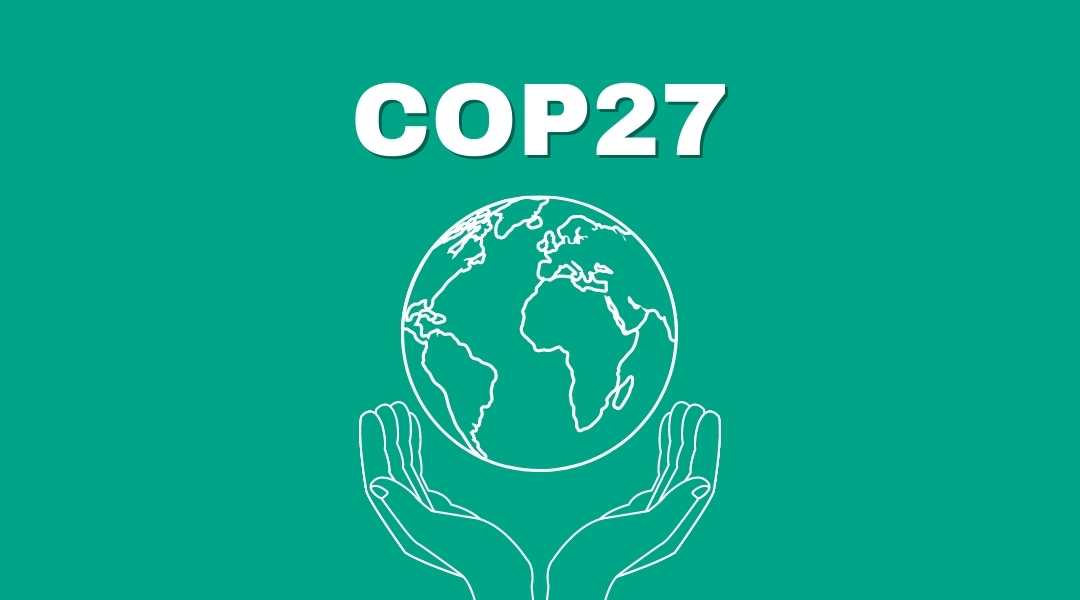The window is closing fast if the recent Emissions Gap Report 2022 is any indication. The report found the international community falling far short of the Paris agreement goals, with no credible pathway to 1.5 degree C in place, while stressing the need for significant steps to reduce greenhouse gas emissions ahead of the United Nations Climate Change Conference 2022 (UNFCCC COP 27) during November 6-18 in Egypt.
COP27 is the next meeting of the group of 198 countries that have signed the UN Framework Convention on Climate Change (UNFCCC).
At COP26, countries agreed to deliver stronger commitments this year, including updated national plans with more ambitious targets. However, only 23 out of 193 countries have submitted their plans to the UN so far.
Governments, heads of state, climate experts and activists gathering at Sharm El-Sheikh, therefore, have to step up the efforts to save the planet.
CAUSE AND EFFECT
The two-week meeting promises to be both symbolic and substantive against the backdrop of high-cost energy and spiralling food prices due to the ongoing Russia-Ukraine conflict. The monsoon flood devastating one-third of Pakistan, warmest summer amid scorching heatwaves, severe drought and widespread wildfires in Europe and Hurricane Ian in the US and the Caribbean fuelled by climate change also wreaked havoc across continents.
So, here is a chance for redemption through action to mitigate the worst effects of the climate crisis by preventing temperatures from rising 1.5 degrees Celsius above preindustrial levels. This is also the tipping point beyond which the Earth may experience irreversible destruction.
Although climate finance is likely to be the main focus of COP 27, the expected presence of a large contingent of business raises hopes that there will be a review of emission-reducing activities as well. Countries and businesses are required to halve emissions by 2030 and reach net zero before 2050.
EFFORT ACCELERATION
The UNFCCC was put together in 1992. It commits the group of nations under COP to act together to stabilize greenhouse gas concentrations “at a level that would prevent dangerous anthropogenic (human-induced) interference with the climate system”. Since then the parties, or nations, have met almost annually.
Speaking about the vision for COP27, H. E. Sameh Shoukry, Egyptian Minister of Foreign Affairs and COP27 President-Designate, said, “We must accelerate climate action on all fronts including mitigation, adaptation and finance in addition to adopting more ambitious mitigation measures to keep the 1.5c within reach. There can be no room for delay in the fulfilment of climate.”
The Egyptian COP27 Presidency has defined the summit’s four key goals as:
Mitigation: All parties, especially those in a position to “lead by example”, are urged to take “bold and immediate actions” and to reduce emissions to limit global warming well below 2°C.
Adaptation: Ensure that COP27 makes the “crucially needed progress” towards enhancing climate change resilience and assisting the world’s most vulnerable communities.
Finance: Make significant progress on climate finance, including the delivery of the promised USD 100 billion per year to assist developing countries.
Collaboration: As the UN negotiations are consensus-based, reaching an agreement will require “inclusive and active participation from all stakeholders”.
THE URGENT CALL
Amid worsening impacts worldwide brought about by numerous extreme climate events in Pakistan, the Philippines, Europe and many other regions, COP 27 is likely to focus on solutions for adaptation, including strategies for managing climate risks and building resilience, while ensuring adequate finance to help climate-vulnerable countries.
5 key areas to watch at COP27:
Nature
Nature is a powerful ally in our adaptation efforts. We can’t keep the goal of 1.5 degree alive if we don’t invest more in preserving nature, which can absorb and store vast amounts of carbon. Besides transitioning to clean energy sources, there is a need to stop and reverse deforestation, transform our food and land use systems and protect ocean systems.
According to the Intergovernmental Panel on Climate Change (IPCC), the land use sector contributes to around a quarter of all global greenhouse gas emissions.
Therefore, better management of our lands and wetlands can help limit global warming and keep the climate within safe boundaries. This apart, coral reefs, mangroves and wetlands protect coastal communities against the force of storms, floods and erosion. Green within cities can reduce dangerous heat-waves and soak up flood waters.
While investing in nature can lead to cleaner air and water and healthier soils, solutions based on it receive less than 10 per cent of all climate funding.
While COP26 saw unprecedented multi-stakeholder partnerships taking shape with the aim of protecting and restoring nature, it’s hoped that examples of implementation will become apparent at COP27.
It is also important to ensure that the voices of the indigenous and local community, who know best how to work with nature, are heard.
Food
The food system, comprising all food products, derived from crop and livestock production, forestry, fisheries, and the larger socio-economic systems surrounding them, is one of the neglected sectors in the global climate action plans.
People often fail to recognise emissions produced as a result of their consumption and production patterns, as well as of livestock.
While Agri-food systems alone are responsible for up to a third of GHG emissions, the IPCC estimates that land productivity has already decreased by 21 per cent because of climate change, affecting food productivity.
In May 2021, the Climate and Clean Air Coalition and the United Nations Environment Programme released a Global Methane Assessment, which showed that human-caused and farming-related methane emissions are the key in the global battle against climate change and can be reduced by up to 45 per cent of this decade.
In a first, New Zealand recently planned to tax agricultural emissions, which includes those from livestock burps and waste, in an attempt to “transition to a low emissions future” and fulfill its promise “to price agriculture emissions from 2025”.
Similarly, farmers in India are taking action to break a cycle of field-clearing fires, help their soil store millions more tons of carbon and recharge water supplies.
Water
We can feel the impact of climate change through worsening floods, rising sea levels, shrinking ice fields, wildfires and droughts.
According to the IPCC report, 3 billion people could face physical water scarcity with 2 degree centigrade rise in global temperature. The crisis is turning acute in Africa and other climate-vulnerable regions.
It suggested reuse of wastewater for irrigation to check groundwater overuse while elaborating on ‘bethma’ practice in Sri Lanka, a traditional technique where the community temporarily reallocates agricultural land among farmers to allow each to have equal access to the limited water supply.
However, effective solutions to address less favourable hydrological conditions – declining rainfall and snowpack, increasing variability, and more floods and droughts need large investment, it added.
Projections from independent groups indicate that global financing needs for water infrastructure are significant and increasing rapidly (from USD 6.7 trillion by 2030 to USD 22.6 trillion by 2050). The figures exclude the development of water resources for irrigation or energy.
There is a need for strengthening collaboration between governments, businesses, innovators and other key actors.
Industry Decarbonisation
Decarbonising the industrial sector, which has historically been a ‘blind spot’ in the clean energy debate, is critical for achieving net-zero emissions by 2050.
Concrete, steel, aluminium, and chemicals, along with ships, planes, and trucks that move them, contribute to 30 per cent of greenhouse gas emissions, and that is projected to grow. The energy used by buildings alone accounts for 27 per cent of global carbon emissions.
The challenge, however, pertains to four sectors that contribute 45 per cent of the carbon dioxide emissions: cement, steel, ammonia, and ethylene.
According to a recent report, the cost of decarbonizing these four sectors would be USD 21 trillion through 2050.
Recent analysis indicates that direct emissions from industry could be 28 per cent lower in 2050 if industrial decarbonisation is supported in developing countries.
Besides, the net zero goals and ambitious decarbonisation targets for the power sector will require a basket of policy instruments. Carbon pricing along with power sector reforms can do the trick here.
The solutions are within reach and a transformation is well underway through investment in new technologies and businesses, such as use of hydrogen instead of natural gas, low-emission vehicles, solar power and replacing fossil fuels with biomass to fire cement kilns, among others.
To accelerate the process, strengthening partnerships between governments, companies, investors, and innovators is crucial.
Climate Adaptation
The frequent and intense storms, floods, fires and other climate-fuelled disasters have put the spotlight on adaptation efforts, which have received far less funding than mitigation, to protect the people who are most vulnerable to the impacts of climate change.
Climate adaptation refers to actions that reduce the negative impact of climate change while taking advantage of potential new opportunities.
Notably, the Global Commission on Adaptation report found that investing USD 1.8 trillion globally from 2020 to 2030 in five areas of climate adaptation could yield USD 7.1 trillion in net benefits. The Economic Case for Nature also shows how protecting ecosystems can avoid trillions in losses to national economies.
Adaptation can be reactive, occurring in response to climate impacts, or anticipatory, occurring before impacts of climate change are observed.
At COP26, counties adopted the Glasgow Climate Pact, which calls for a doubling of finance to support developing countries in adapting to the impacts of climate change and building resilience. And it is expected to remain at the centre of the talks at COP27.


